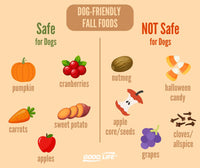Subtotal
$0.00
or
The World; it's a big place, and for many of us we define and limit this space in terms of our daily habits and patterns, but in reality we are talking about a heck of a lot of real estate. So how many dogs do you think are out there? Current estimates have the total population of dogs worldwide at one billion with 250 million as official “pets” of one kind or another. This leaves a populace of roughly 750 million dogs who don't have “flea collars” or a human to walk them, they are known as “village dogs.” Street dogs that lurk in the garbage dumps and neighborhoods of the world, they are the “dogs without collars.”
Raymond and Lorna Coppinger, well known figures in the realm of canine science for decades, have recently released their newest book, “What Is a Dog ” where they argue that this population of street dog have developed in some ways into their own unique “breed” and have become superbly adapted scavengers.
Having grown up in a small town on the delta in northern California I can speak from direct experience that I knew of, played with, and on occasion fed several dogs in my neighborhood who were known to be strays, neighborhood dogs that everyone sort of just adopted from time to time. Where they came from and what they did after I went home was a mystery. No one ever asked, but how did these “strays” ever come to be here?
Well, many in the field of canine science often postulate that one day some hunter-gatherer just grabbed a wolf pup, brought it back to their home and the rest was history. Well the Coppinger's have a bit of a different spin on this theory, which, depending on who you ask, is rather contested; dogs domesticated themselves. They just naturally began hanging around humans, found our leftovers a reasonable source for food, and evolved as scavengers who became dependent on humans. Looking back on my own experiences, this theory for the most part is well supported, at least from my perspective and it has been accepted by many in this field as a … plausible route to domestication.
From a global perspective, just who are these dogs? Over the years, as the Coppingers traveled from one locale to another they observed these street dogs and asked the same question. They began to think about these dog's lives, their unique social behaviors and habits and began to study them. What they discovered is that by and large these dogs are not mongrels or strays, that they are much the same around the world. They found that in colder climates they are larger, and that they are completely polygamous. There can be as many fathers to a litter of puppies as there are puppies to a litter.
And much in the same way as wild animals persist, these puppies are on their own usually in ten weeks, fending for themselves, with most not surviving.
It should be mentioned that these populations of dogs, even given their uniqueness and what we can learn from them, do present a very real health risk to the human populations that surround them. They are unvaccinated, many have rabies, and do present a very real problem for the neighborhoods they exist in. The Coppingers feel that killing them does not solve the problem as it is impossible to kill them all, and they breed so fast, their populations consistently rebound quickly.
Seven-hundred and fifty million dogs worldwide, is a pretty large number. This leaves many considering just what can be done, if anything, to better address this problem, if it even is one. The Coppingers simply state, remove what they are solely dependent on, garbage, If society wants fewer dogs in the street,
is a surefire solution.
Much like the eradication of the wolf from North American, we did so without truly understanding their significance, their importance in the ebb and flow of nature. Maybe the same can be said of the village dog. Their numbers clearly show they are thriving. We may not know their importance now, but before we go and do something imprudent, let's try to first have a better understanding of what these dogs truly represent in the grand scheme of things before we simply react.

You love your dog—but the constant barking every time someone walks past the fence? Not so much.

Handheld Bark Control vs. Collars | Best Dog Barking Deterrent Devices

10 Fun Pet Costume Ideas (and How to Keep Pets Comfortable)

Dog Logic vs. Human Logic: Why Your Dog Thinks the Mailman Is a Monster

Fall-Friendly Foods for Dogs: What They Can (and Can't) Eat This Holiday Season